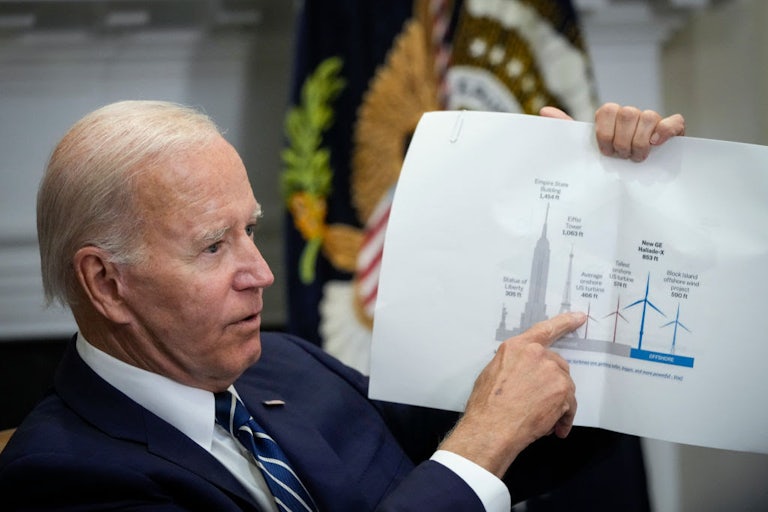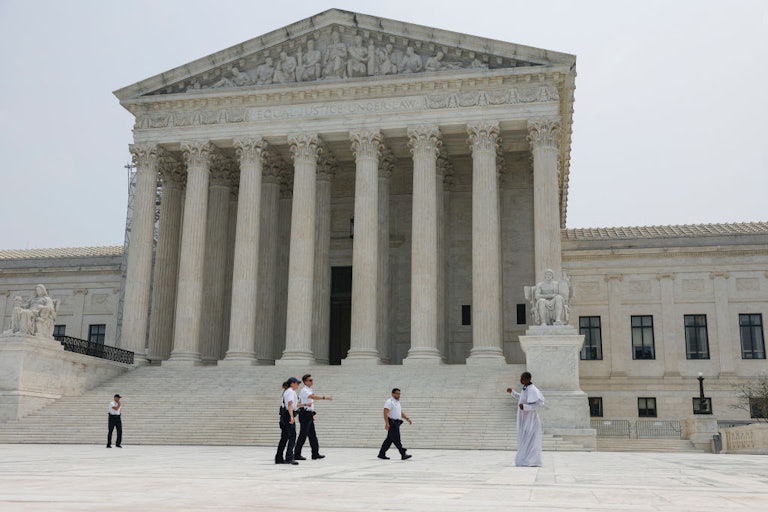For The Wall Street Journal, the Climate Call is Coming From Inside the House
When will the Journal’s editorial board wake up to reality?

Last week, The Wall Street Journal published a bombshell investigation into ExxonMobil’s internal strategy to downplay the role of fossil fuels in causing climate change. The investigation offers shocking details of how Exxon executives worked behind closed doors to push narratives that would help them drill more oil; funded “science to support [their] business” as the consensus around man-made global warming grew; and adopted ludicrous tactics such as trying to influence the U.N. Intergovernmental Panel on Climate Change, the world’s leading scientific body, after the group published a report sounding the alarm.
We’ve known for several years that Exxon has spent the past few decades working to suppress climate science and mislead the public. The Journal’s investigation takes what we already knew about the oil company’s deceit one step further, using newly unveiled documents to show how Exxon continued to perpetuate climate denial well into the 2010s—even as it was making public statements acknowledging climate science and in support of the Paris Agreement. In addition, the period covered by the Journal’s reporting includes the time when the company was under the control of Rex Tillerson, later Trump’s secretary of state.
“The documents reviewed by the Journal, which haven’t been previously reported … show that Tillerson, as well as some of Exxon’s board directors and other top executives, sought to cast doubt on the severity of climate change’s impacts,” reporters Christopher Matthews and Collin Eaton wrote. “Exxon scientists supported research that questioned the findings of mainstream climate science, even after the company said it would stop funding think tanks and others that promoted climate-change denial.” Damning stuff!
For a blockbuster investigation like this, a big media outlet will often pull in reinforcements from its various sections to help promote it or add context. But while the Journal did run a companion podcast on the Exxon investigation, its editorial board and op-ed section stayed completely silent on the bombshell. The editorial board did, however, run a piece last Sunday that fearmongered about the Securities and Exchange Commission working with the “climate lobby” to give “trial lawyers ammunition to attack business” with the agency’s proposed climate disclosure law. That’s not terribly surprising: The Journal’s opinion section, after all, decided to spend the hottest summer in recorded history publishing misleading pieces on climate change and wildfires and railing against efforts to encourage people to bike more. (The editorial board published no pieces on the record-breaking heat the entire country felt this summer—I checked.)
As with the Exxon investigation, the disconnect between The Wall Street Journal’s reporting side and its opinion department isn’t exactly news. The Journal’s opinion section has long been a bastion for some of the most stubbornly immovable—and increasingly absurd—climate denial in news media. It routinely publishes notable players from the climate-denier ranks. Its editorial board has a history of denying basic climate science. It once ran an attack on the science around sea level rise that was so full of scientific errors that a professor of earth science said that if the author was one of his students, he would have failed. Rhode Island Senator Sheldon Whitehouse even gave a speech on the floor of the Senate in 2018 about just how shitty the paper is on this topic.
The Journal’s former owner, Rupert Murdoch, who stepped down from his position this week, is one of the great platformers of conservative talking points—and climate denial—through the various outlets of his media dynasty; the paper is reportedly his first read of the morning, and its editorial board is widely seen as being able to tip the scales of the mainstream Republican Party on various candidates and issues. But the Journal has also faced blowback from its own reporters over content published in its editorial pages, since the newsroom sent a letter to leadership in 2020 complaining about the lack of fact-checking in its op-ed section. As the world gets hotter and hotter, the gulf between the world of the Journal’s venerable opinion staff—where the science around climate change is hogwash, where a delirious “climate lobby” is trying to usurp capitalism, where we should all just shut up and drill more oil—and the stories its decorated newsroom is actually reporting may only grow.
Ironically, the Journal’s investigation was based on a huge trove of documents that Exxon was forced to turn over to New York’s attorney general for its investigation of the company in 2015; that suit, as well as subsequent climate lawsuits, became a favorite punching bag for the editorial board. Over the weekend, California filed a massive lawsuit against several oil companies, and NPR reported that the state is likely to use the documents uncovered by the Journal in court. The so-called “climate lobby” that’s given “trial lawyers ammunition to attack business” that the editorial board is so so up in arms about may wind up simply being the paper’s own reporters, doing good work in its own newsroom.
Good News, Bad News
![]()
Tens of thousands of activists turned out on Sunday in New York to march to demand that the Biden administration end U.S. reliance on fossil fuels.
![]()
U.K. Prime Minister Rishi Sunak will walk back or delay some of the country’s climate policies, he said in a speech Wednesday, claiming the moves will save consumers money.
Stat of the Week
50x
That’s how much more likely climate change made the devastating floods in Libya earlier this month that killed thousands of people, a new study has found.
Elsewhere in the Ecosystem
The Sierra Club has had a rocky road with its approach to racial equity in the wake of the hiring of its first Black leader, The Washington Post reports:
Today, the 131-year-old group is in turmoil over its approach to diversity, equity and environmental justice, according to interviews with 12 current and former staffers, most of whom spoke to The Washington Post on the condition of anonymity for fear of facing retaliation or otherwise harming their job prospects. The tumult illustrates the challenges top environmental groups face in trying to diversify their staffs, despite their recent efforts to reckon with the conservation movement’s legacy of racism. After coming under scrutiny for not doing enough to promote employees of color and fight pollution that disproportionately hurts minority communities, even organizations that have shifted course find themselves embroiled in fights over how to address past wrongs and ensure equity.
Read Maxine Joselow’s full piece at The Washington Post.
This article first appeared in Life in a Warming World, a weekly TNR newsletter authored by contributing deputy editor Molly Taft. Sign up here.






.png)




